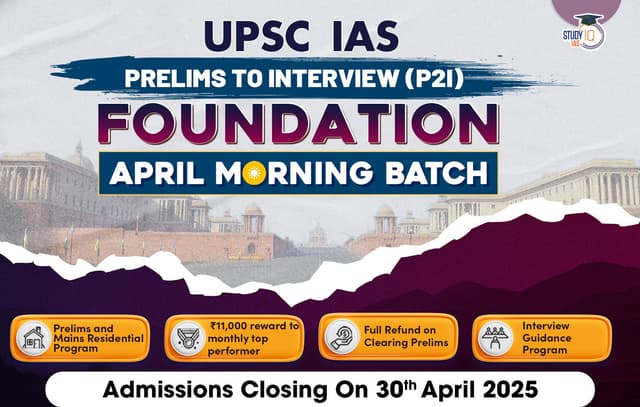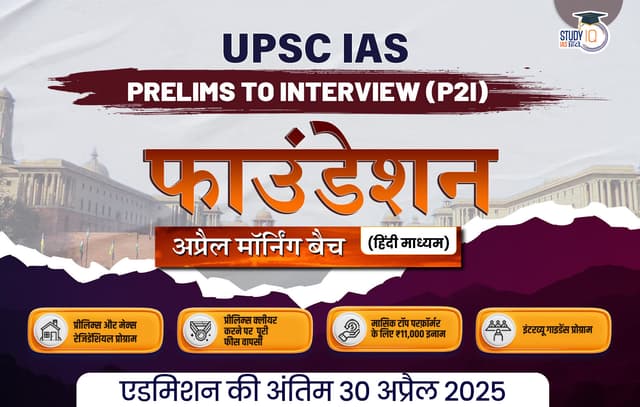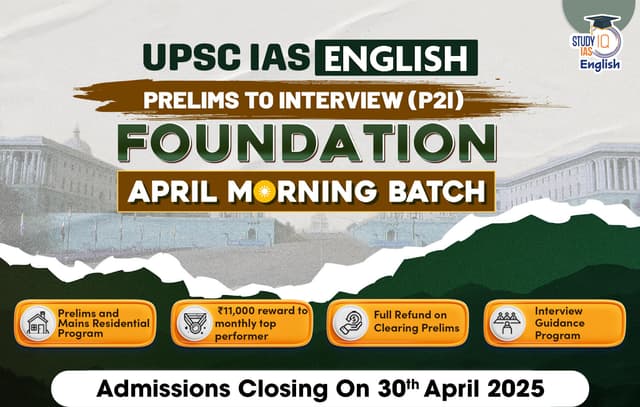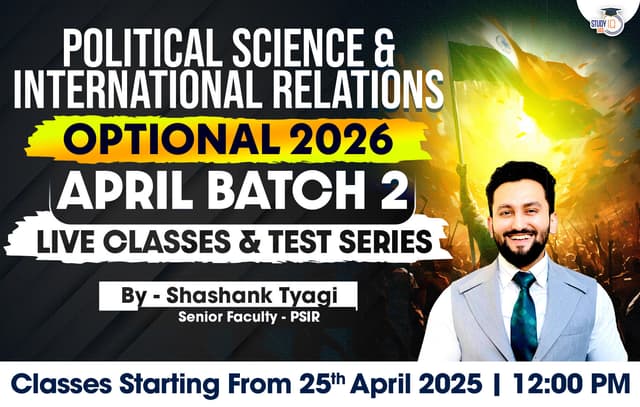UPSC Prelims News of 10 March 2023
Coronary Heart Disease
Context: The IIT Guwahati scientists have come up with a solution for Coronary Heart Disease, where they have used proteins to repair damaged heart cells.
The Research
- The researchers used cellular reprogramming, which involves specific proteins, called transcription factors, that alter the “expression of genes within a cell and direct it to take on a new cellular identity”.
- Transcription can convert fibroblasts (scar-tissue forming cells) into functional cardiomyocytes (beating cells).
About Coronary Heart Disease
- Coronary heart disease is a type of heart disease where the arteries of the heart cannot deliver enough oxygen-rich blood to the heart.
- Cause: It is caused by cholesterol, a waxy substance that builds up inside the lining of the coronary arteries forming plaque.
- This build-up can partially or totally block blood flow in the large arteries of the heart.
- Reasons for cholesterol build-up: Unhealthy lifestyles, poor diets, physical inactivity, tobacco use and consumption of harmful levels of alcohol
- Symptoms: Common symptoms include Chest Pain, while in most cases blood flow to the heart is blocked causing a heart attack, or the heart suddenly stops working, also known as cardiac arrest.
UPSC Prelims News 9 March 2023
Dementia
Context: More than 10 million older adults aged 60 or over in India may have dementia, according to study published in the journal Neuroepidemiology.
Key Findings of the Study
- The study has found that the prevalence rate of dementia in adults aged 60 or over in India could be 8.44% — equating to 10.08 million older adults in the country.
- The prevalence of dementia was greater for those who were older, were females, received no education, and lived in rural areas, the study found.
About Dementia
- It is a progressive neurological disorder that affects the brain’s ability to process and store information, resulting in difficulties with cognitive functions.
- Causes: Dementia is often associated with aging, but it can also occur in younger individuals due to various causes, including Alzheimer’s disease, Parkinson’s disease, stroke, and other disorders that affect the brain.
- Symptoms: Memory loss, Difficulties with thinking, Visual perception, Self-management, Problem solving or language and the ability to focus and pay attention.
- Treatment: There is currently no treatment available to cure dementia, though numerous new treatments are being investigated in various stages of clinical trials.
- WHO’s efforts for Dementia:
- Global Dementia Observatory (GDO): The GDO is a web-based platform that collects and disseminates information on the global burden of dementia, policy responses, and best practices for dementia care.
- Global Action Plan on the Public Health Response to Dementia: This action plan outlines a series of actions to improve the lives of people with dementia, their families, and caregivers.
- Guidelines on Risk Reduction of Cognitive Decline and Dementia: It provides evidence- based recommendations on interventions for reducing modifiable risk factors for dementia.
Great Indian Bustard
Context: The Central Electricity Authority (CEA) has issued draft regulations for protecting Great Indian Bustards from electric transmission lines.
About the Draft Central Electricity Authority (Construction of Electric Lines in Great Indian Bustard Area) Regulations, 2023
- According to the regulations, all electric lines of 33 kV and below passing through the ‘Great Indian Bustard Area’ will be underground.
- And those above 33KV will be overhead lines installed with bird flight diverters.
About the Great Indian Bustard
- Great Indian Bustard (GIB), large bird of the bustard family, one of the heaviest flying birds in the world.
- Habitat: The great Indian bustard inhabits dry grasslands and scrublands on the Indian subcontinent.
- Its population is confined mostly to Rajasthan and Gujarat. Small populations occur in Maharashtra, Karnataka and Andhra Pradesh.
- Threats: The bird is under constant threats due to collision/electrocution with power transmission lines, hunting, habitat loss and alteration as a result of widespread agricultural expansion, etc.
- Protection Status:
- IUCN: Critically Endangered
- CITES: Appendix1
- Convention on Migratory Species (CMS): Appendix I
- Wildlife (Protection) Act, 1972: Schedule I
- Effects for conservation:
- Project Great Indian Bustard: It has been launched by the Rajasthan government with an aim of constructing breeding enclosures for the species and developing infrastructure to reduce human pressure on its habitats.
- Conservation Breeding Facility: MoEF&CC, Rajasthan government and Wildlife Institute of India (WII) have also established a conservation breeding facility in Desert National Park at Jaisalmer in June 2019.
- Species Recovery Programme: GIB has been identified for conservation efforts under the component ‘Species Recovery Programme’ of the Centrally Sponsored Scheme (CSS)-Development of Wildlife Habitat.

National Assessment and Accreditation Council (NAAC)
Context: Recently, the chairperson of NAAC’s executive committee has resigned after repeatedly demanding an independent inquiry into the functioning of the council.
About the National Assessment and Accreditation Council (NAAC)
- It is an autonomous institution established by the University Grants Commission (UGC), under Section 12-ccc of the UGC Act of 1956, for assessing and accrediting higher education institutions (HEIs) of the country.
- Mandate: To make quality assurance an integral part of the functioning of Higher Education Institutions (HEIs).
- What are the functions of NAAC?
- NAAC is entrusted with assessing the quality of India’s higher educational institutions.
- Following a multi-layered assessment process, it awards grades to colleges and universities.
- Its parameters include curriculum, faculty, infrastructure, research and financial well-being.
- The grades issued by NAAC range from A++ to C. If an institution is graded D, it means it is not accredited.
- Eligibility criteria for institutions to apply for Accreditation by NAAC?
- Currently, only institutes that are at least six years old, or from where at least two batches of students have graduated, can apply.
- The accreditation is valid for five years.
- Is NAAC’s accreditation mandatory for institutions?
- While the UGC has over the years issued many circulars directing institutes to mandatorily undergo NAAC’s assessment, the process still remains largely voluntary.
- As of January 31, 2023, out of the 1,113 universities and 43,796 colleges in the All-India Survey on Higher Education Report 2020-21, only 418 universities and 9,062 colleges were NAAC-accredited.
Graded Response Action Plan (GRAP)
Context: The overall AQI of Delhi has significantly improved from the level of 213 (lower end of ‘Poor’ category) to 119 (‘Moderate’ category).
About GRAP:
- GRAP is a set of measures to be taken to reduce Air Pollution depending on the current level of pollution.
- The action plan which was formulated in 2016 and notified by the Ministry of Environment, Forests & Climate Change in 2017 for Delhi and the National Capital Region (NCR).
- It institutionalised measures to be taken when air quality deteriorates.
- The plan is incremental in nature – therefore, when the air quality moves from ‘Poor’ to ‘Very Poor’, the measures listed under both sections have to be followed.
- It prevents PM10 and PM2.5 levels from going beyond the ‘moderate’ national AQI category.
Implementation:
- Till 2020, the Supreme Court-appointed Environment Pollution (Prevention & Control) Authority (EPCA) used to order States to implement GRAP measures.
- The EPCA was dissolved and replaced by the Commission for Air Quality Management (CAQM) in 2020.
- CAQM is a statutory mechanism to coordinate and oversee diverse efforts to improve air quality in Delhi, Punjab, Haryana, Rajasthan and UP, with the underlying remedial approach.
TROPEX 23
Context: The 2023 edition of Indian Navy’s major maritime exercise TROPEX, was conducted in the Indian Ocean Region.
About TROPEX 23
- The Theatre Level Operational Readiness Exercise (TROPEX) is conducted biennially and witnesses’ participation from all Indian Navy units and also Indian Army, Indian Air Force and Indian Coast Guard.
Objective:
- To validate and refine the Navy’s Concept of Operations, including operational logistics and interoperability with other services.
- To test the combat readiness of the combined Fleets of the Indian Navy to operate in a multi-threat environment.
Execution:
- All surface combatants of the Indian Navy including Destroyers, Frigates, Corvettes as well as submarines and aircraft are put through complex maritime operational deployments.
- The exercise is being conducted in different phases, both in harbour and at sea, encompassing various facets of combat operations, including live weapon firings.
Benefits:
- The maritime exercise also facilitates operational level interaction with the Indian Army, Indian Air Force, and the Coast Guard, which will further strengthen interoperability and joint operations in a complex environment.
H3N2
Context: Rising cases of intense cough lasting for more than a week coupled with fever has been observed in many parts of the country.
About H3N2
- Influenza is a viral disease. It is caused by Orthomyxo virus (influenza virus) pathogen.
- H3N2 influenza, also known as the “Hong Kong flu,” is a type of influenza virus that can cause respiratory illness in humans.
- It is a subtype of the Influenza A virus and has been responsible for several influenza outbreaks in the past.
- H3N2 viruses can infect birds and mammals. In birds, humans, and pigs, the virus has mutated into many strains.
Spread:
- H3N2 influenza is highly contagious and can spread from person to person through droplets generated when an infected person talks, coughs, or sneezes.
- It can also spread by touching a surface contaminated with the virus and then touching one’s mouth or nose.
Symptoms:
- Prolonged illness, fatigue, chills, headache, body aches, runny nose, sore throat, cough, and fever.
- Some people may also experience diarrhoea and vomiting.
- The symptoms usually last for about a week, but some people may experience them for longer.
Treatment:
- Getting plenty of rest, drinking enough fluids, and taking acetaminophen or ibuprofen to reduce fever headache, and aches and pains.
Permanent Capital Vehicles
Context: A working group under SEBI is looking at feasibility of allowing permanent capital vehicles (PCVs) in India.
About PCVs:
- PCVs are investment structures that allow fund managers to obtain long-term capital commitments from limited partners.
- Target investors: PCVs are aimed at long-term investors such as pension funds and insurance companies.
- Structure: Different forms in which PCVs exist include limited partnerships traded publicly on an exchange, real estate investment trusts, closed-ended funds, interval funds, and variable funds like annuities and life insurance.
- Structure of PCVs can be in such a way that an investor will have an option to redeem a specific sum of their investment after a lock-in period of say, 5, 10 and 15 years.
- PCVs can be held in form of two ways: privately held or publicly traded.
Benefits of PCV
- Long term investment: Unlike regular private equity (PE) and venture capital (VC) funds which have fixed tenure, PCVs can last in perpetuity.
- Beneficial to startups: PCVs would offer long, patient funding to unlisted Indian entrepreneurs, allowing investors long view of a business instead of showing return in a few years.


 UPSC Prelims News 20 March 2023
UPSC Prelims News 20 March 2023
 UPSC Prelims News 17 March 2023
UPSC Prelims News 17 March 2023





















